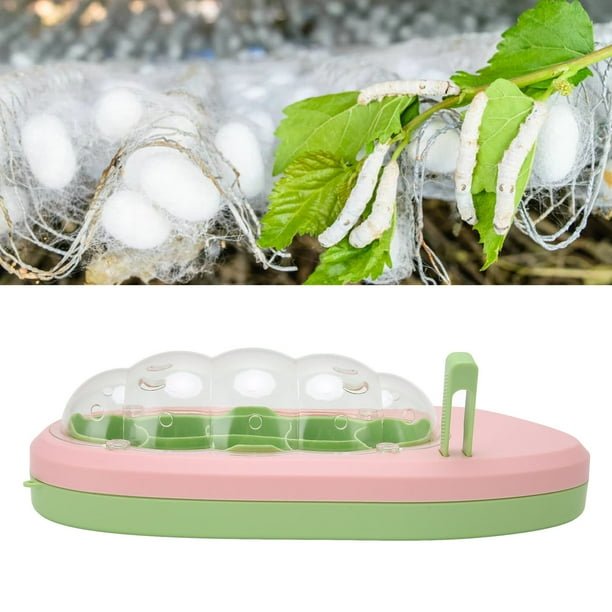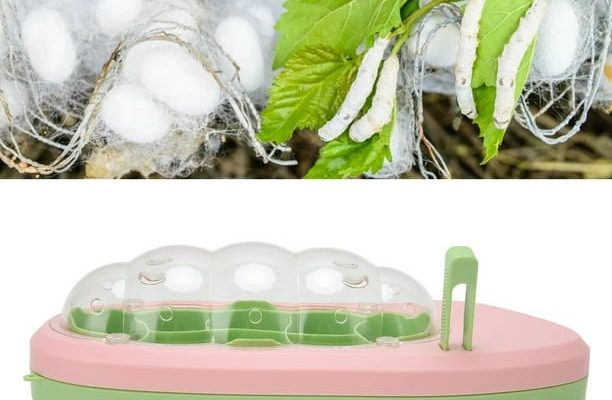
Creating the right enclosure for silkworms isn’t just about keeping them contained. It’s about ensuring they have adequate airflow, humidity, and temperature. Just as a house needs good ventilation and warmth, silkworms need their space to feel just right. Whether you’re a teacher wanting to introduce students to the life cycle of these fascinating creatures or a hobbyist eager to cultivate them for their silk, choosing the right enclosure is your first step to success.
Why Silkworm Enclosures Matter
Setting up a proper enclosure for your silkworms is essential for several reasons. First, it helps maintain the right **temperature** and **humidity levels**. Silkworms thrive in temperatures between 70°F and 85°F. If the enclosure isn’t temperature-controlled, it could lead to stunted growth or even death. Additionally, high humidity is needed to keep their environment as close to their natural habitat as possible. A good enclosure ensures that the moisture level is just right, which is crucial for silkworm development.
Second, an ideal silkworm enclosure offers **adequate ventilation**. Airflow is important for preventing the buildup of harmful gases and keeping mold at bay, which can be detrimental to the health of your silkworms. Think of it like opening a window in a stuffy room—the fresh air makes a world of difference! You want your silkworms to breathe easily and feel comfortable in their space.
Lastly, the right enclosure also **protects your silkworms** from pests and other environmental factors. Whether it’s a curious pet or dust and debris, a secure enclosure will help keep your precious larvae safe as they grow.
Types of Enclosures for Silkworms
When it comes to silkworm enclosures, you have a few options to consider. Here are some popular ones:
- Plastic Containers: These are lightweight and easily available. Just make sure they have good ventilation holes.
- Mesh Cages: Perfect for airflow, these cages allow silkworms to get the fresh air they need.
- Aquariums: If you have an old fish tank lying around, it can be repurposed as a silkworm habitat! Just ensure it’s well-ventilated.
- Wooden Boxes: These can be customized and are great for larger projects, though they require more upkeep to keep clean.
Each option has its advantages and could work well depending on your needs. For example, plastic containers are great for small groups, while mesh cages can suit larger batches, especially if you’re running a classroom project.
Setting Up Your Silkworm Enclosure
Now that you know the types of enclosures, it’s time to set one up! Here’s a step-by-step guide to creating a comfortable environment for your silkworms:
1. **Choose the Right Size:** Depending on how many silkworms you have, select an enclosure that provides enough space. A general rule of thumb is to allow about 10 larvae per square foot.
2. **Prepare the Base:** Line the bottom of the enclosure with **absorbent material** like paper towels. This will help manage moisture and provide a clean surface.
3. **Add Ventilation:** If your chosen enclosure doesn’t have sufficient airflow, you can create ventilation holes with a drill or knife. Just make sure they’re small enough that your silkworms can’t escape.
4. **Control Temperature and Humidity:** Use a thermometer and hygrometer to monitor the conditions. If the environment is too warm, consider placing the enclosure in a cooler room or using a fan to circulate air.
5. **Provide Food:** Silkworms primarily eat mulberry leaves, so make sure you have a steady supply! Place fresh leaves in the enclosure and remove any leftovers daily to keep the environment clean.
Setting up the right enclosure might seem tricky, but once you understand the basics, it becomes second nature.
Maintaining Your Silkworm Enclosure
Keeping your silkworms healthy is not just about setting up the right enclosure; it also involves maintaining it. Here are some tips to keep your habitat thriving:
– **Regular Cleaning:** Change the absorbent material at least once a week to prevent mold and bacteria growth. This is crucial for keeping your silkworms safe and healthy.
– **Check Food Supply:** Ensure that the silkworms always have fresh mulberry leaves. If the leaves start wilting or turning brown, it’s time to replace them.
– **Monitor Conditions:** Keep an eye on temperature and humidity regularly. If temperatures drop or rise unexpectedly, you might need to adjust the location of the enclosure or use heaters or fans.
– **Keep It Secure:** Regularly inspect the enclosure for any holes or cracks, especially if you’re using plastic or wooden boxes. Pests can sneak in through the tiniest openings.
With a bit of routine care, you can create a thriving environment for your silkworms, making your project both rewarding and educational.
Benefits of Silkworm Projects in Schools
Incorporating silkworms into classroom activities offers several educational benefits. For one, it teaches students about **life cycles**, from egg to caterpillar to pupa and finally to silk-producing moth. It’s a hands-on way to learn about biology and ecosystems in a tangible manner.
Here’s the thing: students get a front-row seat to observe growth and change. This kind of learning can stick with them far longer than reading from a textbook. They learn responsibility by caring for live creatures, nurturing their curiosity about nature.
Moreover, discussing the history and significance of silkworms can spark conversations about culture and industry. Did you know that silk has been a prized material for thousands of years? By studying silkworms, students can explore economics and history as well!
Common Challenges and Troubleshooting
Even with the best intentions, issues can pop up when raising silkworms. Here are some common problems and how to tackle them:
– **Overheating:** If your enclosure gets too warm, try moving it to a cooler area or providing extra ventilation. Fan placement can also help circulate air without producing drafts.
– **Mold Growth:** If you notice mold, immediately remove contaminated materials and replace them. Adjust humidity levels too; sometimes, it’s simply too moist!
– **Poor Feeding:** If the silkworms are not eating well, ensure the leaves are fresh and not wilting. Sometimes, they can be picky eaters, so you might need to try different sources, like other types of mulberry leaves.
– **Pests:** If you see tiny bugs or ants, immediately clean the enclosure and move the silkworms to a new, pest-free environment. Prevention is key, so always keep the area clean.
Troubleshooting these issues can feel daunting, but remember, every challenge is a learning experience—both for you and your silkworms.
Creating silkworm-friendly enclosures for schools and hobbyists is an enriching experience. It’s all about providing the right conditions for these fascinating creatures to thrive, while also immersing yourself or your students in the wonders of nature. From understanding the importance of temperature and humidity to learning about the responsibilities of care, every step offers valuable lessons.
Whether you’re setting this up in a classroom or enjoying a personal hobby, remember, it’s okay to make mistakes along the way. Each challenge provides a chance to learn more about these tiny silk-makers and the world around us. So, roll up your sleeves, embrace the process, and enjoy watching your silkworms grow!

